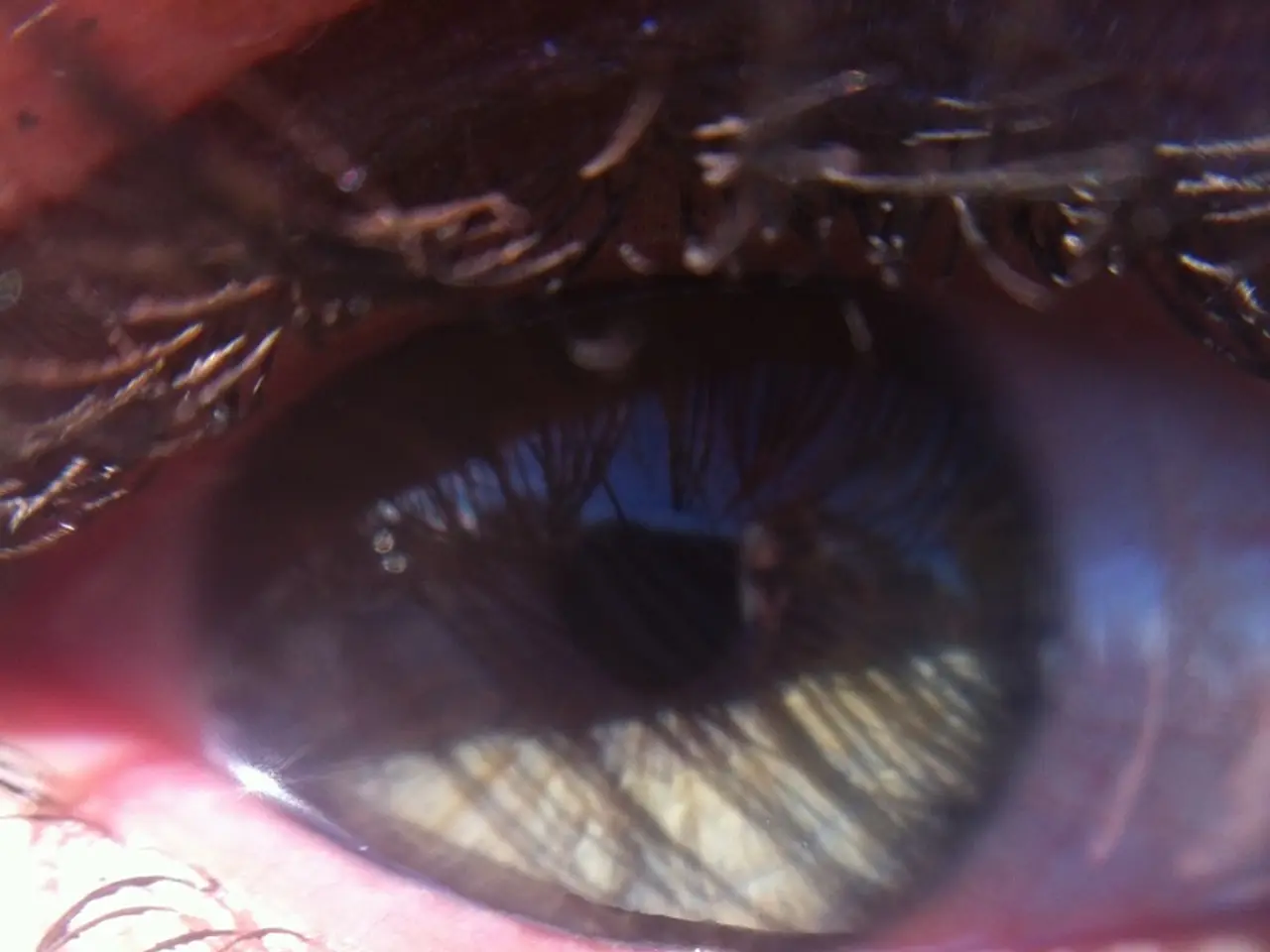Eyelid Oiliness: Understanding Causes, providing Solutions, and Implementing Precautions
In the world of skincare, oily eyelids can be a common yet often overlooked issue. This article will delve into the symptoms, causes, and effective treatment methods for oily eyelids, as recommended by the American Academy of Dermatology (AAD).
Symptoms of oily eyelids may include sore and swollen eyelids, dry and itchy or gritty eyes, red and watery eyes, and blurry vision. If you are experiencing these symptoms, it is essential to address the issue to maintain eye health and improve your quality of life.
Sebaceous glands, present under the skin's pores, produce sebum, an oily substance that helps protect and hydrate the skin. However, excessive sebum secretion can lead to oily eyelids, resembling sweaty eyelids. Factors causing this excess sebum include hormonal fluctuations, environmental factors, certain systemic medications, using products that clog pores, certain genes, and stress.
The treatment for oily eyelids depends upon the underlying cause. For oily skin, the AAD recommends targeted use of retinoids, which help regulate oil by speeding cell turnover and reducing pore size. Mineral sunscreen, especially those with zinc oxide or titanium dioxide, are also emphasized to protect delicate eyelid skin from UV damage while minimizing irritation.
In addition to retinoids and sunscreen, several treatment options and remedies are available to remove excess oil from eyelids. These include gentle face wash twice a day and after exercise, using noncomedogenic and oil-free products, avoiding oil- or alcohol-based cleaners and makeup, applying gentle moisturizer daily, wearing sunscreen outdoors, using blotting papers and medicated pads to remove excess oil from the eyelids, removing makeup before going to sleep, and consulting a dermatologist if oily eyelids persist.
It is crucial to approach the cleansing step of your skin care routine with extra care, as excess cleansing can turn the skin flaky and cause it to produce even more oil. Dermatologists recommend using alcohol-free, gentle cleansers no more than twice daily to gently remove dirt and impurities without stripping off excess oil.
While hormonal fluctuations can increase oil production, people in humid climates are more likely to have oily skin. The tarsal plates, the main structural component of the eyelids, contain the Meibomian glands and eyelash follicles. Meibomian glands are tiny oil glands that line the margin of the eyelids and are responsible for secreting oil, which helps with the lubricating properties of tears.
Excessive oil production by the meibomian gland can lead to oily eyelids and a condition called meibomitis or meibomian gland dysfunction. Seborrheic dermatitis, a common skin condition that appears as a scaly rash on the eyelids and does not itch, can also contribute to oily eyelids.
In summary, effective treatment and prevention for oily eyelids involve targeted use of retinoids to control oil and maintenance with safe, broad-spectrum mineral sunscreens to prevent damage and irritation. Consulting a dermatologist can personalize the regimen to your needs. Always remember to test a new product or method on a small patch of skin before using it on the eyelids to identify if it is suitable for use.
Maintaining eye health and overall health-and-wellness requires addressing issues like oily eyelids, which can lead to symptoms such as sore and swollen eyelids, dry and itchy or gritty eyes, red and watery eyes, and blurry vision. In such cases, consulting a dermatologist can help identify the underlying medical-conditions, such as meibomitis or meibomian gland dysfunction, seborrheic dermatitis, or hormonal fluctuations. To treat oily eyelids, the American Academy of Dermatology recommends using targeted skincare products like retinoids, gentle cleansers, and noncomedogenic and oil-free products, along with behavioral changes like avoiding oily products and excess cleaning. It's essential to follow these skin-care practices to ensure skin health and wellness, especially for the sensitive eyelid area.




